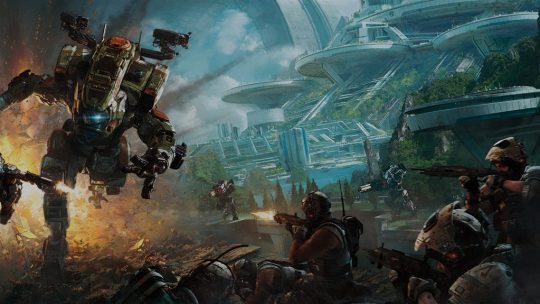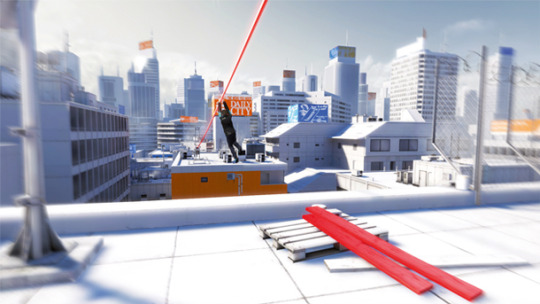#gamedesign leveldesign gamdev unity gdc
Explore tagged Tumblr posts
Text
Level Design Workshop: Blockmesh and Lighting Tips

I watched this talk from David Shaver about level design with blockmesh. The talk is packed full of amazing tips for any aspiring level designer.
Level Requirements
Environment Type
Time of Day
Location in Story
Available Character Abilities
Enemy Types
You should think of these before starting the level design as these will influence how you design your level
Affordance
A way to communicate to the player what to play with or where to go
Players learn the affordance rules via consistent color and shape and a trust contact is formed.
Ensure affordances work consistently game-wide.
Add to your blockmesh for playtests
Affordance is a way to tell the player where they should go or what they can interact with. For example when we look at a door we can tell its push or pull just by seeing the handle.
You can use colour and shapes to tell the player where to go. For example Mirror's Edge uses the colour red. Or you can use shapes, such a piece of wood partially hanging off a building to indicate you can jump off it.
You can also use both, such as having an edge on a cliff that sticks out and is a different colour.

Denying Affordance
A way to communicate to the player where they can’t go
This is using the same techniques from before but you are achieving the opposite result
If you did not want a player to climb up a wall, you could push foliage on top or have spikes on top. This will let the player know they can’t go there
You can use this together with affordance, an example being having a door boarded up but the window open, indicating to the player they need to enter the house through the window.

Visual Language - Shapes
Shape Consistency is important - communicates affordance
Primitive shapes have an effect on player psychology
We can use this to guide players.
Certain shapes have an effect on player psychology.
Round Shapes are considered safe and not dangerous
Rectangular shapes are considered stable, like a safe house.
Diagonal Shapes are viewed as dangerous
You can use Round shapes to indicate safe area the player can walk, while using diagonal shapes to nudge the player on the right path.
And finally having a square building will give the player a goal to arrive at where they know they will be safe.

Visual Language - Colour You need this to be consistent with the environment. For example, if you use a bright green in a mossy cave to indicate where you can climb it would feel right and consistent. However if you used bright green to climb a rock in the middle of a desert it would not be consistent with the environment.
Colour consistency is important - it communicates affordance
Colour provides context in a blockmesh
Gets the team on the same page without explanation
You can contrasting colours to guide the player, such as having the top of edges you can climb be a colour that stands out.

Landmarks
Orients players.
Distant object seen from many vantage points in the level.
A goal to work towards.
Using landmarks creates a goal and can guide the player. It also lets them know they are going the right way.
When building the level, a good way is to create the landmark and build backwards from it. This lets you shape the level around it.
Half Life 2 does this well with its Citadel, acting as something the player was going towards at the start, then away from the Citadel and eventually back to it.

Openings Attract
Caves, doors, arch ways, etc.
Often leads to a refuge space, which psychologically feels safe
Mystery -”What could be Inside?”
Having an opening in a wall encourages the player to enter.
If you have an opening, try and make it stand out so the player can see it.
Using opening can encourage players to explore different paths in your level.
An example I can think of was when I first played Mario Kart 64, on the Koopa Troopa Beach level. I remember when I first saw the hole in the mountain and was wondering what was in it, and I stopped racing and my new goal was to try and get into the cave, just to see what was inside.

Gates and Valves
Gates stop progress until conditions are met
Valves prevent backtracking.
Both reduce the possibility space and prevent aimless wandering.
Great for linear games, but can be sprinkled into open worlds too.
Gates are pretty straight forward. The player has to achieve something before they can progress, such as killing all the enemies or solving a puzzle.
Valves however stop the player from backtracking. You can do this with a door closing behind the player, or the player jumping down from a ledge they can’t climb back up.
Gears of War would do this a lot, and do it quite well. You would go into a room where you have to push forward and fight enemies who have a strategic position. You would then fight more enemies once you are in the strategic position.

Leading Lines
Lines that draw your eyes to the intended point of interest
Composition technique
Roads, pipes, cables, etc.
Leading the players eyes if one of the most important things with level design. If you need them to find a certain object or see a certain event, using leading lines can help you lead the players eyes.
For example, this photo of Titanfall 2 uses pipes to lead the players eyes towards a door. An enemy will barge through the door and without these pipes the player might miss the moment that happens.

You can also use leading lines to guide the player where you want them too. In the photo below, you can see the pipes on the right encouraging the player to follow them.

Pinching
Angle shapes to funnel players to a specific spot.
Good for redirection
Great for setting up a reveal.
Depends on your mobility mechanics.
Pinches are useful forcing a player to look in a certain direction. You can use these when you want the player to see something important.
In the example below, by forcing the player to go walk through this pinch, they will clearly see the hospital in the distance and know they are going the right way.

Framing and Composition
Draws attention to point of interest by blocking other parts of the image, making it stand out.
Google photography composition techniques - lots of good websites
Great when combined with Pinching.
You can use the layout of the level to frame important objects. In the photo below you can see that river helps lead the players eye towards the dam, which helps frame the building.
In the Last of Us 2 trailer, there is a moment where the car is facing to the right which draws the players eyes there, and then there are two perfectly framed trees with light shining from them. This clearly shows the player the way to go even though the player is in a forest.

Breadcrumbs
Attract/lead the player, a piece at a time to a goal
Can be almost anything that draws the eye
-Stuff that breaks up the negative space of floor/walls. -Pickups -Enemies -Lit Areas
Usually better to add after early playtests of blockmesh to see if they are even needed.
Breadcrumbs help lead the player. You essentially litter the ground with a trail of objects. A classic example is Super Mario games, where they use coins to lead the player. I really like this technique as its super simple but highly effective.

Textures
Just point the way to go
Examples
-Arrows pointing the way -Scrapes on the ground/walls -Signs -Etc.
You can use textures to act as an arrows to tell the player where to go. In my narrative game I have used blood smears and drag markings on the ground to guide the player. In some games you can even just use an arrow if it matches the environment, such as in a street with a sign that tells you where the area is you have to go. You should try and block these out in your blockmesh.
Movement
Use movement to grab the eye.
Examples: -Big Scripted moments -Birds -Spark FX -Enemies -Something flapping in the breeze
Guides the eye to where you want the player to go
I like the idea of using movement to grab the players attention. It helps them to notice things you want them to see.
Doing this in the blockmesh phase is highly dependant on your game
Try to do it anyway for your playtests
Cubes triggered to lerp in a direction or along a spline will suffice
Can be a late game bandage for guidance
Light and God Rays
Players are attracted to the light
God rays draw attention and a line to the goal
Important in blockmesh phase.
I believe lighting is one of the most important things to think about when designing a level. It helps guide the player, show them points of interest and can hide areas you don’t want them to go too.
God Rays in particular act as a beacon. What I really liked was how he mentioned a squint test. The Squint Test is where you squint your eyes and have a look at your game. What stands out when everything is blurry? Whatever stands out is the first thing people will see when they play your game.
This entire talk is amazing and is so jam packed full of information.
This talk taught me of so many things I should be thinking about in the blockmesh stage of level design and how to think of ways to guide the player throughout your levels.
As an aspiring level designer, this video is the best video to teach you about everything you need to know.
2 notes
·
View notes